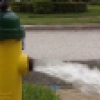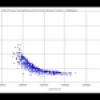Optimizing Real Water Distribution Systems
Using optimization techniques to solve engineering problems especially in water distribution systems analyzing field has been around for at least 30 years in academia but unfortunately, to my best knowledge none of these methods has made the leap to the broader industrial users such as consultant firms with the exception of handful of projects. Whenever I talk about these techniques with colleagues in consultant industry, the consensus is that these methods could not be applied to real world case studies. To be honest I think this is mainly academia’s fault. We often got involved in solving some unrealistic issues with even more unrealistic assumptions that we forgot to solve “a practical problem” instead of “a problem” designed toward easy publication.
Anyway, here are my thoughts on how to use/combine optimization and hydraulics to solve real world case studies in the way that makes it is more appealing to the industry.
- Please stop using the New York tunnel, Hanoi network, or C-Town case studies in your papers! These so-called benchmark networks have nothing to do with real world issues with the exception of their name. These systems were used since 30 years ago not because they were good case studies but because academic people did not have access to cheap computational power which is not the case anymore. Go to your city’s utility company, ask them for their network model, either consider all of it or a zone in it and apply your methodology on this system rather than a fake benchmark. Believe me you will learn much more from using a real system than a fake one. If you want to test your method on the aforementioned benchmarks, do so but do not put it in your paper. The results of applying your methodology on these systems will always look good. I have never seen a methodology that fails on these simple/unrealistic systems!
- Based on my limited experience with various optimization models, genetic algorithm based approaches works much better than stochastic based approaches such as PSO or ACO on problems with higher number of decision variables. I know, many people might have different opinion/experience, but please note that I am limiting my statement to problem with more than 1,000 decision variables. In most papers that I have seen, often the case studies with much smaller number of decision variables are solved. Stochastic approach might have a better convergence on this type of problems which by the way are often not real, but if you want to work on real systems, the number of decision variables are way higher and I am yet to see an stochastic optimization methodology which works well in this type of environment. Year ago, I used Non-dominated Sorting Genetic Algorithm, NSGA-II, to minimize operating and capital costs in a network rehabilitation planning problem simultaneously. The case study had approximately 10,000 decision variables and several thousand of constraints. NSGA-II was able to converge in an acceptable rate. The above video shows the formation of Pareto Front in one of the runs. More detail about this project could be find in
3. Use parallel processing to speed up your calculation. Almost every optimization algorithm that is being used in solving WDS problems could be implemented to evaluate the solutions in parallel and you have access to a machine with 4 to 8 cores, so no excuse for not using them and stop compiling about the simulation time. You may see my previous post on parallel processing and WDS
4. If you compare various optimization algorithms with the one that you are using and suggesting, please do not fine-tune them. I often see manuscripts in which authors repeat the simulations to optimize the optimization method’s variables as such crossing probability in GA or so on. The reality is that these variables are highly depending on the case study and they will change if you change your network of some part of it so there is no point in fine-tuning or optimizing these variables except making your results misleading.
I am open to hear from you about your experience on using optimization in real case studies and would be happy to add them to this post under your own name so feel free to leave a comment.
Ehsan Roshani Ph.D., P.Eng.






